Kashi Vishwanath Temple is one of the major pilgrimage sites in India and among the best places to visit in Varanasi. It is a place where you feel absolutely connected to Lord Shiva who is believed to be the most significant deity in the Hindu pantheon. Immense crowds, continuous chanting of mantras and the synchronous ringing of bells make Kashi Vishwanath a sight to behold and a must-visit place for all the pilgrims in India and around the world. Let’s delve into the history of Kashi Vishwanath Temple to get a spiritual perspective.
History
Varanasi is the oldest living city in the world with 3500 years of documented history. The city finds its mention in the Rig Veda and has been the centre of cultural and religious activities since the Bronze Age. This beautiful city was built where two rivers Varuna and Vasi joined the holy Ganga and thus was named Varanasi. The local tribe called Kasha lived there, so it was also known as Kashi.
Let’s get to the temple now. Kashi Vishwanath Temple was constructed in the 18th century by Rani Ahilyabai Holkar of Indore. It is located on the western banks of the holy Ganges and is undoubtedly the most sacred Hindu site in Varanasi. Vishwanatha or Vishweshwara meaning Ruler of the universe is the main deity in the temple. The gold used to cover the two domes of the temple was donated by Maharaja Ranjeet Singh, then ruler of Punjab. Since 1983, the temple is being managed by the Uttar Pradesh government.
Jyotirlinga, a devotional object which represents Lord Shiva, is placed inside the temple. Jyoti means radiance and lingam is the sign of Lord Shiva. It is the Radiant sign of the Almighty. In the Hindu religion, a glimpse of the Jyotirlinga is believed to be a soul-cleansing experience. Because of that, the Kashi Vishwanath Temple has played a very significant role in the spiritual history of India. It is said that the sanctity of this place gets heightened during the time of aarti and has the power to transform lives and put one in the path of knowledge and devotion. The Kashi Vishwanath Temple Aarti and Kashi Vishwanath Darshan are, in fact, very popular amongst the Hindu devotees from all over India and major attractions for foreigners as well.
Timings
The Kashi Vishwanath Temple opens at 2:30 AM in the morning and closes at 11 PM. However, pilgrims are allowed to view the Lord from outside the sanctum only after 9 PM. The temple performs various rituals during this time such as the morning, afternoon, and evening aarti which the devotees can be a part of.
Here’s a glimpse of the daily schedule for the live darshan at Kashi Vishwanath temple: -
| Darshan | 4:00 AM to 11:00 AM; 12:00 PM to 7:00 PM; 8:30 PM to 9:00 PM |
| Mangala Aarti | 3:00 AM to 4:00 AM |
| Afternoon Bhog | 11:30 AM to 12:00 PM |
| Saptarishi Aarti | 7:00 PM to 8:30 PM |
| Shringar Bhog and Aarti | 9:00 PM |
|
Shayan Aarti |
10:30 PM |
Entry Fee
There is no entry fee for entering the Kashi Vishwanath temple.
Electronic gadgets are prohibited inside the temple for which Locker facility is available in the shops nearby. You may also purchase prasad, flowers and various other puja items from these shops for offerings inside the temple. These prasad packets are chargeable and start from Rs.100/-
How to Visit
The peace and sense of being that Kashi Vishwanath Temple is unexplainable, and also one of the big reasons why it sees such amazing footfall every year. If you are planning to visit the temple for the first time, here is all you should know about reaching the temple by road, rail or air for a smoother passage to the most prominent site in Varanasi.
How to reach Kashi Vishwanath temple by road
First, you may reach Varanasi via several private and state-run transport buses from Tier 1 and Tier 2 cities of India. Then, you need to reach a locality called Lahori Tola by either taking a taxi or an auto rickshaw. Once you are there, look out for the entry gate of the Kashi Vishwanath temple. After entering this gate, you will pass into a narrow lane called Vishwanath Gali, which is full of small shops selling sweets, traditional eatables etc. and other puja items for offering worship inside the temple. Vishwanath Gali is the easiest and most well-tread passage to reach the Kashi Vishwanath temple.
How to reach Kashi Vishwanath temple by train
There are many railway stations in Varanasi all of which are in close proximity to the temple. Varanasi city station is 2 kilometres away, Varanasi junction is 6 kilometres away, Maduadih station is 4 kilometres away and another railhead in Mughal Sarai is 17 kilometres away. Almost all these railway stations are closely linked to other cities of India which makes travelling to Varanasi quite easy. From the exit gate of these stations, cycle rickshaws and auto rickshaws can be easily hired directly for the Kashi Temple.
How to reach Kashi Vishwanath temple by air
Varanasi has a very busy The Lal Bahadur Shastri Airport in Babatpur which is well-connected to Indian metros such as Delhi and Mumbai. Interconnecting flights are available from Delhi airport. So, tourists coming from other Indian cities or abroad can reach the Delhi domestic airport and board a flight bound for Varanasi. The temple of Kashi Vishwanath is about 20-25 kilometres away from Lal Bahadur Shastri Airport. Tourists may hire a taxi, cab or any other mode of public transport to reach the temple.
Other Places For Sightseeing in Varanasi
When in Varanasi, there’s a belief that one can break free from the cycle of rebirth and unite with the divine when the kingdom comes. The epitome of action in Varanasi can be found at the Banaras ghats — a series of giant steps leading to the Ganges River.
Visit these ghats to make your trip to the "Spiritual Capital of India" an experience to remember: -
Dasaswamedh Ghat
Dasaswamedh Ghat is one of Varanasi’s most revered religious sites. Its lively atmosphere makes it one of the best ghats to visit here. You can attend the Ganga aarti of Varanasi here, the highlight of Dasaswamedh Ghat, which is an extravagant river worship ceremony held after sunset. This tourist attraction has an impressive array of flower sellers, boat operators hustling rides along the Ganges River, and sadhus (holy men) rocking face paint. Spend hours here as the world around you keeps moving.
Assi Ghat
Assi ghat is described in the Kashi Khand as Assi “Saimbeda Tirtha” means the one who gets a dip here once in his life will get punya of all the Tirthas. Assi Ghat's star attraction is a Shiva lingam (phallic representation of the Hindu deity) beneath a sacred peepal tree. Assi ghat finds its mention in the ancient Hindu literature in Matsya purana, kurma purana, Padma Purana, Agni purana and Kashi khanda. It draws hundreds of pilgrims every day, who come to worship Lord Shiva after rinsing in the Ganges River.
Manikarnika Ghat
Manikarnika Ghat is one of the oldest ghats in Varanasi and has been accorded the highest position among other ghats by the Indian Holy Scriptures. It is believed that a person immediately attains moksha if he is cremated here.
Dhamek Stupa
This is one of the most famous Buddhist stupas located in the village of Sarnath near Varanasi. The stupa is a massive stone and brick structure that stands tall at 43.6 meters and is 28 meters in diameter. It was built more than 1,500 years ago as a replacement for a structure that dated back to 249 BCE. National and international tourists alike flock at Sarnath to get a glimpse of Buddhist architecture and culture at this significant centre of Buddhism.
Darbhanga Ghat
Darbhanga Ghat offers the best opportunity to get amazing shots of Varanasi, holding immense religious and historical significance in Varanasi tourism. The stairs leading down to the riverbank are crowned by the ultra-luxurious BrijRama Palace, an old fort that has since been converted into a heritage hotel. With Greek pillars and rounded balconies, the area has a regal backdrop that shines through in the photos you click.
Plan it well by booking a Varanasi city tour package and be there timely; your visit to Kashi Vishwanath is sure to be a fulfilling one.










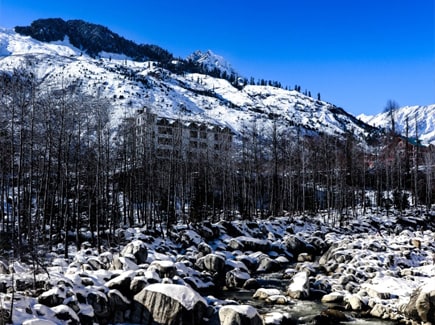



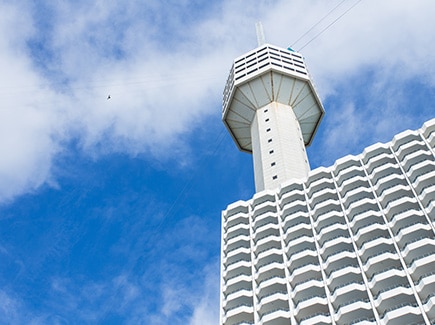

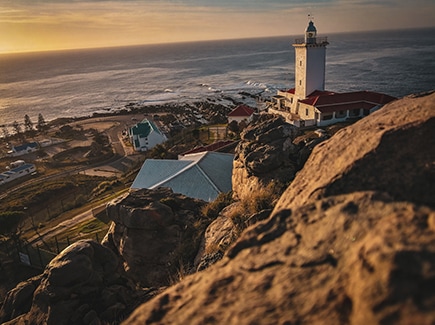


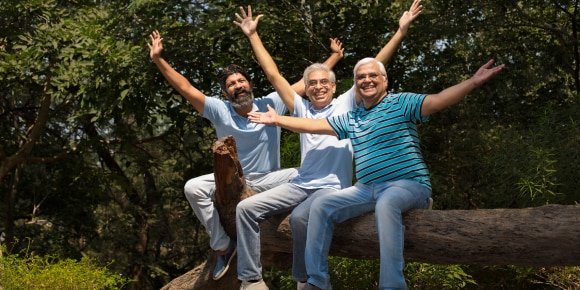




















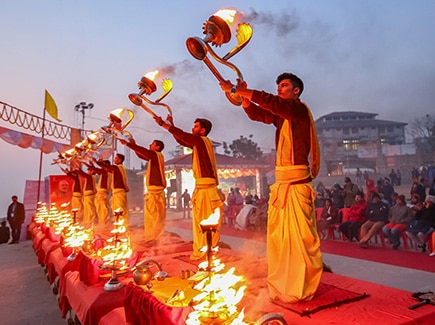
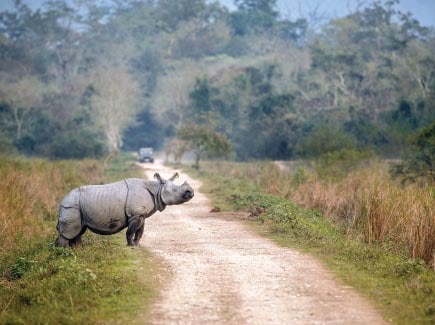

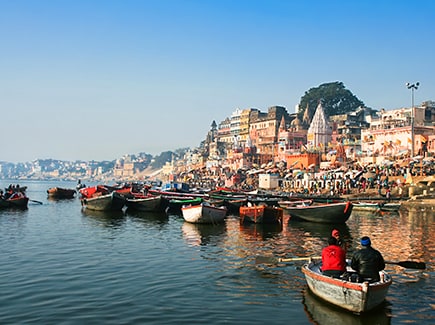
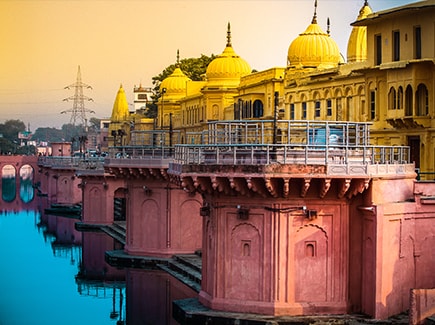















Post your Comment
Please let us know your thoughts on this story by leaving a comment.